NIL
Second
Game Notes NCAA Urbana Regional · May 12-14 · Urbana, Illinois Venue: Atkins Golf Club · Par 71 · 7,533 YardsLive Stats: scoreboard.clippd.com TV: None What 2 Watch 4• The Cowboys will be one of 13 teams in action at Atkins Golf Club. Regional action will consist of 54 holes over three days with play […]



NCAA Urbana Regional · May 12-14 · Urbana, Illinois
Venue: Atkins Golf Club · Par 71 · 7,533 Yards
Live Stats: scoreboard.clippd.com TV: None
What 2 Watch 4
• The Cowboys will be one of 13 teams in action at Atkins Golf Club. Regional action will consist of 54 holes over three days with play getting underway on Monday and running through Wednesday.
• The second-ranked Cowboys will be the No. 1 seed, while No. 10 North Carolina will be the two seed and 14th-ranked Illinois will be the No. 3 seed. The trio will begin play at 8:00 a.m. (CST).
• The par-71, 7,533-yard layout is one of six regional sites that will see the top five teams and the low individual not on those teams advance to the NCAA Championship at Omni La Costa Resort & Spa in Carlsbad, Calif. The finals are slated for May 23-28.
• The second-ranked Cowboys have won three events in a row after their victory at the Big 12 Championship last month. Overall, OSU has won five times this season, marking the 32nd time since 1973-74 the Pokes have logged at least five wins in a season.
OSU In Regional Play
• OSU leads the nation with 16 regional titles, six more than the second-best total. The Cowboys have won seven regional titles in 10 tries under the direction of head coach Alan Bratton, including a run of six consecutive from 2016-22.
• The Cowboys opened with consecutive regional titles in 1989 and 1990 before adding their third in 1997. OSU went back-to-back again in 2002 and 2003 before adding another in 2006. The Cowboys reeled off three consecutive wins from 2009-11. After finishing first in 2014, OSU ran off six in a row from 2016-2022.
Individual Success
In 2022, Eugenio Chacarra was medalist at the NCAA Columbus Regional to become the 12th Cowboy to do so. Kevin Wentworth won consecutive titles in 1989 and 1990 before Alan Bratton took top honors in 1995. Bo Van Pelt added his name to the list of medalists in 1997 before Jonathan Moore won nine years later. Kevin Tway won in 2008 and 2009 before Peter Uihlein’s victory in 2010. Tway became the first-ever player to win three regional crowns with his victory in 2011. Jordan Niebrugge and Kristoffer Ventura went back-to-back in 2015 and 2016, respectively.
The Bratton Era
Since taking over as head coach at his alma mater in 2013-14, Alan Bratton has maintained the program’s lofty standards.
• His squads have 46 team titles and have produced 37 individual medalists.
• Reached NCAA match play six times, winning the 2018 NCAA Championship and finishing as the runner-up in 2014.
• Bratton has seen 29 Cowboys achieve All-America status and 31 Pokes earn All-Big 12 honors.
• Bratton’s 2018 squad remains the lone team to win the stroke play and match play portions of the NCAA Championship.
Season Recap
• OSU enters play having won three consecutive events after picking up its 12th Big 12 title last month at Southern Hills Country Club in Tulsa. The Cowboys now have 57 conference titles overall.
• Preston Stout repeated as the Big 12’s medalist, becoming just the second player in league history to do so and joining Morgan Hoffmann as the only other Cowboy to win multiple Big 12 titles.
• Stout and Ethan Fang were selected to compete for the U.S. Palmer Cup squad and appear on the Haskins Award Watch List.
• In the World Amateur Golf Ranking, Fang ranks 15th, Stout is 22nd and Eric Lee is No. 49.
• Stout was named the Big 12 Golfer of the Month for April.
NIL
Azzopardi Listed on Shrine Bowl 1000 Watchlist
Story Links MOSCOW, Idaho – Idaho Vandals offensive lineman, Nate Azzopardi, was named to the Shrine Bowl 1000 Watchlist, the East-West Shrine Bowl announced on Monday. The watchlist recognizes the top 1,000 players who are eligible for an all-star game in college football. Azzopardi is one of eight players from the Big Sky […]

MOSCOW, Idaho – Idaho Vandals offensive lineman, Nate Azzopardi, was named to the Shrine Bowl 1000 Watchlist, the East-West Shrine Bowl announced on Monday.
The watchlist recognizes the top 1,000 players who are eligible for an all-star game in college football. Azzopardi is one of eight players from the Big Sky Conference, and one of 50 players from an FCS school to appear on the list.
Azzopardi has appeared in 26 games for the Vandals over the past two seasons and was named a team captain prior to the 2023 season. Having played his entire career with the Vandals, the Pacifica, Calif. native has seen action in more than 2,000 snaps and, over the course of his career, has developed into one of the best offensive linemen in FCS, earning an elite 87.7 pass-block grade from Pro Football Focus last season. He also represented the Idaho Football team along with Head Coach Thomas Ford and defensive lineman Sam Brown last week at Big Sky Kickoff in Airway Heights, Wash.
The East-West Shrine Bowl provides many of the top NFL prospects the chance to showcase their talents and abilities on a big stage, all while supporting the mission of Shriners Children’s. This year, the East-West Shrine Bowl will take place at Ford Center at the Star in Frisco, Teas, on Jan. 27, 2006.
The Idaho Vandals report for fall camp tomorrow, July 29, and have their first fall practice on July 30. Idaho kicks off its season on August 30 against Washington State. That game can be seen on The CW.
SOCIAL MEDIA: Stay up to date with everything happening with the Vandals by following them on Facebook, Instagram, and X.
TICKETS: Season tickets, mini plans, and single-game tickets can be purchased here or by calling the Idaho ticket office at (208)885-6466.
NIL
Q&A: ACC Commissioner Jim Phillips on growth, change in women’s college basketball
CHARLOTTE, N.C. — Last week was a busy one for Jim Phillips. As he enters his fifth year as the commissioner of the Atlantic Coast Conference, he’s had to grapple with a rapidly changing landscape in college sports. NIL has transformed recruiting, the transfer portal has changed roster management, and conference realignment driven by revenue […]

CHARLOTTE, N.C. — Last week was a busy one for Jim Phillips.
As he enters his fifth year as the commissioner of the Atlantic Coast Conference, he’s had to grapple with a rapidly changing landscape in college sports. NIL has transformed recruiting, the transfer portal has changed roster management, and conference realignment driven by revenue from media rights deals for football has sparked some restlessness and uncertainty.
Advertisement
Under Phillips, the ACC has largely been able to weather those storms. The 2024-25 seasons were the first with Cal, Stanford and SMU as full members, and the Mustangs made the College Football Playoff. The ACC also settled lawsuits with Clemson and Florida State, ensuring the short-term future of the the league.
Across Phillips’ tenure as commissioner, the ACC has also been incredibly successful in a wide variety of women’s sports. Just take a look at the 2024-25 season. The ACC captured national championships in women’s soccer and women’s lacrosse, both won by North Carolina. The Final Four in women’s soccer was essentially an ACC invitational with the Tar Heels, Duke, Stanford and Wake Forest making the national semifinals. In volleyball, two ACC teams, Louisville and Pitt, made the Final Four. In women’s basketball, eight ACC teams made the NCAA Tournament and four of them hosted opening-weekend games as top-16 seeds. Nine ACC teams received bids to the NCAA softball tournament, the second-most of any conference.
Between his state-of-the-conference address on Tuesday and the media frenzy that followed around new North Carolina coach Bill Belichick on Thursday, Phillips carved out some time to talk with SB Nation about all things women’s sports:
This conversation has been lightly edited for brevity and clarity.
How do you think the House Settlement — which brings an increase in scholarships and changes to roster sizes — will impact women’s sports, and is there any concern about that?
Phillips: “I’m very excited about this — the change that’s been agreed upon by the plaintiffs and the defendants that now allows more scholarships to student athletes. For our men and for our women to now have those scholarship caps lifted, it will only provide more opportunities and provide more funding for our student-athletes in our Olympic sports. The rev share and the NIL piece of this thing, I don’t think anybody knows just yet. But what I would say, for our conference, I know that our schools are committed to continuing to support broad-based programming at a incredibly high level. This conference, for 73 years, has been a leader when it comes to opportunities for women and Title IX and broad-based programming. We have 15 women’s sports and 13 male sports. So, I think early signs are, with these changes and the roster limits and scholarships and some of those things, as well as some revenue now directly benefiting student athletes, we’ll be in a good place.”
Advertisement
To stay with House and rev share for a moment, it feels like — across the Power 4 — football is going to get a lot of money, men’s basketball is going to get a lot of money, and it feels like that third piece of the pie for a lot of schools is going to women’s basketball. Has there been any talk about a minimum spending number for revenue sharing for women’s hoops to keep the ACC at the top of that sport?
Phillips: “So, we’ve not done anything relative to a mandate or saying, ‘you have to do this,’ for a certain amount of investment. Our presidents and chancellors, athletic directors and senior women’s administrators have all been unified in the direction of supporting women’s basketball… We recently went to a distribution model where a portion of our revenue at the ACC that would go to success in football and in men’s basketball. But we did not pass that until we also agreed that if women’s basketball created the opportunity for units to be given that we would also do the same thing with our distribution of revenue based on athletic success in those three sports. I’m really proud of that. That was really driven by our presidents and chancellors and obviously supported highly by our athletic directors. So, we’re there, distributing additional money for those teams that have had really good seasons. That, to me, is a clear indication that you’re rewarding those that are investing. And so the idea is, can we continue to push forward and invest, and invest more in women’s sports, and in this case, women’s basketball? Because not only is it the right thing to do, but there’s a tangible financial benefit for you doing so.”
Right. Because of the ACC’s success initiative, there’s an incentive to spend money on women’s basketball and be good at it.
Phillips: “Absolutely. You said it well.”
Advertisement
To stay on units for women’s basketball, I think there are some coaches who have some buyer’s remorse on the TV deal with ESPN, because women’s basketball viewership is booming, but their tournament is lumped in with a bunch of others in this package. Dawn Staley is someone who has called for ESPN to come back to the table and renegotiate. Do you think that’s even possible? And do you think women’s basketball is ready for it’s own TV deal?
Phillips: “You know, the NCAA is led by a tremendous president (Charlie Baker) who negotiated the deal. I don’t have the figures, but I know the deal was substantially larger than it was last time. I’m sure they tried to get every dollar they could from our TV partner, ESPN, and that everybody felt good about it based on what the what the value of women’s basketball was at that particular time. I don’t think there’s ever a TV deal that you have, that you don’t go back and wish maybe you had a little bit more. I would think that as we watch what happens in the next couple years that Charlie would, you know, likely reengage with ESPN. I really respect all of those comments that I hear, not only from Coach Staley, but others as well. These are amazing women in the game, and men coaches as well, and they should continue to advocate for additional support. That’s why we’ve made the strides that we’ve made. But we still have a ways to go, and we don’t want to just be complacent about it, or say that there’s not more work to be done, because there is.”
The women’s basketball tournament has had this double-regional format for a few years now. This past season, we had some coaches like Geno Auriemma, Kim Mulkey and Vic Schaefer loudly complain about this format. Do you have any opinion on four regionals versus two and what’s better for the sport?
Phillips: “To me, as stewards of the game, we owe the membership and the great game of women’s college basketball to continue to have an assessment on that. And I totally understand what they’re saying, because I have been around long enough to see it… But the game is growing. And similar to my last answer, I don’t think you can sit idle when you’re trying to nurture and develop and continuing to grow the game. These are pivotal moments. We should look at it with no predetermined outcomes and see what’s right. Because it would be great if we could get to the point where we did go to more sites and spread the game around even more. But I know that’s delicate, because it is based on some financial stuff, and it is based on how many fans would attend, and some of those things. We want our student athletes to have great experiences and to play in sold out arenas. And we’re moving in that direction. So we’ve made progress, but again, I think there’s still some more work to do.”
Advertisement
The ACC women’s basketball tournament is going to the metro Atlanta area this season. There was a couple of different cities in the mix for the bid. In 2027, the tournament is in Charlotte. Could you see the women’s tournament rotating through a few different host sites like men’s tournament does now?
Phillips: “I don’t want to say that we’re at that point, but yes, we wouldn’t have taken it out of North Carolina if we weren’t interested in really seeing what the response will be. In this particular case, it’s what will be the response of the Greater Atlanta area? I think it’s healthy… If we can grow the game, if we can get into different markets, that only helps this league, it helps those student-athletes, coaches, universities, and the rest of it. So, I’m very excited about trying this out, and no one knows how it’s going to go until we go through it. We’ve gotten great support from from the group down in Atlanta. They’re excited about it.”
The other two women’s sports that seem to be booming and growing in viewership and audience are volleyball and softball. How can the ACC capitalize on that growth?
Phillips: “I’m really proud. And credit again to our presidents, chancellors and athletic directors. These have been campus decisions to support those programs. We try to provide the funding as best we can. It’s the school’s dollars, and they do what they see as best. So when you look at volleyball and where we’ve been, that’s been a wonderful thing to see. It’s been Pitt, Louisville, Georgia Tech, SMU, and it’s growing. And in softball, it’s the same thing. We’ve had Florida State, a historic program, but Clemson and Duke — those are newer programs that have gotten into the NCAA Tournament and have really done well. So, I think you’re going to see a strong continuation of that, and I’m proud of our coaches that are recruiting exceptional talent in those two sports, volleyball and softball… Part of it too, I should say, is they’ve really had great templates to follow when you think about the history of this conference in soccer and lacrosse and field hockey and others.”
Advertisement
The NCAA recommended adding flag football to its Emerging Sports for Women program. We’ve had a handful of Division I schools start varsity teams, in addition to a bunch more at the Division II and III levels. Is the ACC watching this? Are there presidents talking about adding it as a sport?
Phillips: “We are watching. We’ve had a few preliminary conversations, but nothing of substance. I think we’re all kind of watching what’s happening with the House Settlement and NIL. The focus has really been on implementing that, trying to do the very best we can for all of our student-athletes with additional scholarships, different additional revenue. So, we haven’t really had the proper time to really explore what’s happening in women’s flag football.”
NIL
Bailey Named to Maxwell Award Watch List
Philadelphia, PA. – NC State quarterback CJ Bailey has been named to the 2025 Maxwell Award Watch List. Today, the Maxwell Football Club announced its watch list for the 89th Maxwell Award, which is presented annually to the most outstanding player in college football. Bailey is one of 80 college football players named to the […]

Philadelphia, PA. – NC State quarterback CJ Bailey has been named to the 2025 Maxwell Award Watch List. Today, the Maxwell Football Club announced its watch list for the 89th Maxwell Award, which is presented annually to the most outstanding player in college football.
Bailey is one of 80 college football players named to the list and marks the second straight year the Wolfpack has had a quarterback named to the prestigious watch list, following Grayson McCall last season.
As a freshman in 2024, Bailey was called into action earlier than expected but quickly became one of the top freshmen in the country and top performers in school history. The Miami, Fla. native started nine games and ranked eighth in the ACC in total offensive touchdowns with 22.
Totaling 2,413 passing yards, he ranked second nationally among true freshmen in the category and totaled 17 touchdowns with a passing efficiency of 143.97. His 17 touchdown passes ranked 17th in program history and are the second most by a freshman, only behind Phillip Rivers and tied with Russel Wilson.
His .649 completion percentage was the highest for a freshman in school history and ranked sixth in the ACC.
Semifinalists for the Maxwell Award will be announced on November 11, 2025, while the three finalists for the Maxwell Award will be unveiled on November 25, 2025. The winner of the 89th Maxwell Award will be announced as part of the ESPN Home Depot College Football Awards Show held on December 11, 2025. The formal presentations of the Maxwell Award will be made at the Maxwell Football Club Awards on Friday, March 13, 2026, in Atlanta, Georgia.
The Maxwell Football Club was founded in 1935 and is the oldest football organization of its kind in the United States. The Club recognizes excellence in performance at the high school, collegiate, and professional levels of the game. The Maxwell Club is also deeply involved and fully committed in the community through programs that promote academic excellence, community volunteerism, and leadership development.
The Maxwell Award is a member of the National College Football Awards Association (NCFAA), which encompasses the most prestigious awards in college football. The NCFAA’s 25 awards have honored more than 900 recipients since 1935. This season, 12 NCFAA awards will honor national players of the week each Tuesday.
NIL
Album Review
The Dirty Nil have unleashed a brand-new crop of bangers with their fifth album, The Lash, out July 25 via Dine Alone Records. The album sees the band return to their stripped-down roots, a rowdy rock ‘n’ roll style that the Dirty Nil are proficient in. The album is clear with its sound, vibe, and […]



The Dirty Nil have unleashed a brand-new crop of bangers with their fifth album, The Lash, out July 25 via Dine Alone Records. The album sees the band return to their stripped-down roots, a rowdy rock ‘n’ roll style that the Dirty Nil are proficient in. The album is clear with its sound, vibe, and purpose. To be loud and quiet, heavy and soft, in the most rock ‘n’ roll way possible.
The Lash opens up the listening experience with “Gallop of the Hounds,” a battle hymn for 2025 and great opener that showcases the band’s ability to go full speed ahead and then slow it down while still maintaining the momentum. Bentham’s guitar licks are juicy, and his riffs are crunchy. His vocals are a singing mixture of shouts that effortlessly transition into smooth crooning. Fisher’s drumming keeps the song grounded and solid, emphasizing the louds and the softs.
Next up, the song “Fail In Time” feels like a Nil classic, describing feelings of happiness, but with the worry or feeling of the good times failing or ending. The guitar rings throughout the song and then finishes the song with pummeling riffage. There’s an urgency in this song to hold on to what brings us joy.
“Rock N’ Roll Band” is an attitude-drenched banger for the masses to shout. The song has a simple formula—Be loud and catchy as hell. The chorus lyric, “Someone else is getting rich!” is painfully relatable to so many these days, and this song gives that anger a place to release. The band know well that the music industry is not an easy thing to take on, and to never bend the knee to its will.
We’re treated with a truly soft song in “This Is Me Warning Ya.” The Dirty Nil have had slower and quieter songs before, but nothing quite at this level, and it is special. It shows another side of the band’s songwriting and abilities. It halts the listener and transports them somewhere else, with a new emotion. Also included are violin and cello accompanying the guitar that make for an ethereal collaboration.
“Spider Dream” is another slower paced one, but instead of an ethereal vibe, it has more of a western-sounding style. It’s a dreamy western song, lamenting about how things turn out. Lyrics like “Last night I dreamt my body was covered up in spider bites, and for some reason I didn’t really mind” gives the listener plenty of food for thought.
The Lash closes with “I Was A Henchman.” This song is ripe with distortion and rambunctiousness. Bentham’s guitar and Fisher’s drums call and response show just how in tune they are with each other. It encapsulates the Nil at its core, pure unfiltered, raw rock ‘n’ roll. “No false gods above me!” being a line that zaps the listener, prompting the message of breaking free and being yourself. The song tops off the album epically.
The Dirty Nil are what modern-day rock ‘n’ roll should be. They are part of the evolution of the genre, taking bits from punk, hardcore, and western, to make a perfect specimen. To quote Bentham, “Hail hail rock ‘n’ roll!”
NIL
Backcountry Welcomes Level Nine Sports to its Family of Brands
PARK CITY, Utah — Backcountry, the leading premium specialty retailer of outdoor gear and apparel, is welcoming local Utah retailer Level Nine Sports to its family of brands. This strategic partnership will benefit Level Nine Sports’ e-commerce capabilities and physical retail experience while providing a wider range of cost-conscious outdoor goods to Backcountry customers. In […]
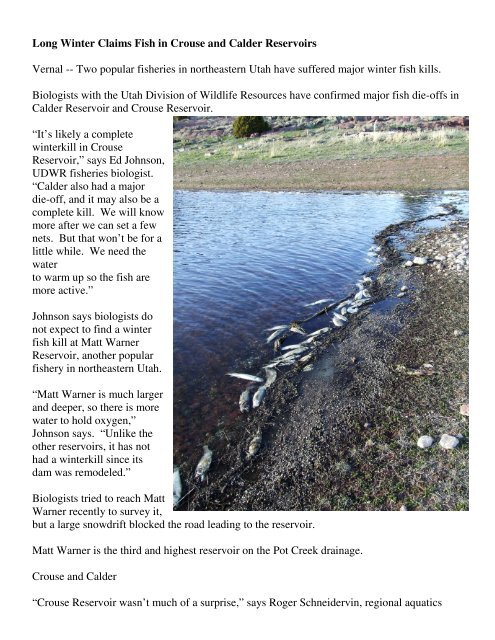

PARK CITY, Utah — Backcountry, the leading premium specialty retailer of outdoor gear and apparel, is welcoming local Utah retailer Level Nine Sports to its family of brands. This strategic partnership will benefit Level Nine Sports’ e-commerce capabilities and physical retail experience while providing a wider range of cost-conscious outdoor goods to Backcountry customers.
In this new partnership with Backcountry, Level Nine Sports will continue its mission of providing quality goods and premium customer service at the lowest prices possible. Level Nine Sports and its team of avid skiers, snowboarders, and bikers will be a powerful addition to Backcountry’s Gearhead team and receive increased access to vendor training to better serve customers online and in-store. The two Level Nine Sports Utah retail locations, located in Millcreek and Ogden, will remain open and will continue serving the local outdoor community with additional retail support from Backcountry.
Additionally, the Level Nine Sports e-commerce platform has been refreshed with a new look and expanded product offerings, providing an enhanced shopping experience for customers.
“Backcountry is proud to partner with another local Utah business that shares our passions for serving the outdoor community,” said Kevin Lenau, Backcountry’s chief financial officer. “By expanding Level Nine Sports’ reach and capabilities, we are committed to supporting the needs of value-minded shoppers and helping more people access the outdoors they love.”
For the past 20 years, Level Nine Sports has played a vital role in Utah’s economy, serving outdoor enthusiasts across the state and around the world. The company remains deeply committed to making skiing, snowboarding, and mountain biking accessible to everyone by offering the lowest prices on gear from top brands.
“Level Nine Sports is in excellent hands with this new Backcountry partnership,” shared Mitch Lamb, outgoing CEO of Level Nine Sports. “We’re thrilled to see Level Nine Sports enter this new chapter. The increased support it will receive from Backcountry will help the Level Nine Sports brand continue to grow and better serve the outdoor community. This partnership will elevate the Level Nine Sports experience for customers and employees alike.”
Customers can enjoy several sales offers in the coming months, as Level Nine Sports continues to offer gear at the best price possible. Offers include a Bundle & Save 20% on Skis & Bindings and Helmet & Goggles, respectively.
About Backcountry
Established in 1996, Backcountry has become a trusted cornerstone in outdoor retail, offering a curated selection of premium products from nearly 800 brands both online and across nine U.S. locations. Renowned for its commitment to quality and durability, Backcountry’s in-house apparel line is developed in collaboration with athletes and supported by its team of Gearhead experts. With decades of experience, a broad assortment of quality products, and an unwavering focus on exceptional customer service, Backcountry is the one-stop-shop for outdoor enthusiasts of all levels and budgets.
About Level Nine Sports
Level Nine Sports is dedicated to making skiing, snowboarding, and mountain biking accessible to everyone by offering the lowest prices on the quality gear online and in-store. Known for unbeatable deals on top brands, Level Nine Sports (or L9) delivers expert service through a passionate team of skiers, snowboarders, and bikers.
NIL
Morton tabbed to Maxwell Award watch list
PHILADELPHIA – Texas Tech senior quarterback Behren Morton was named to the 2025 Maxwell Award watch list on Monday. The annual award, presented by the Maxwell Football Club, is given to the most outstanding player in college football. The Maxwell Award watch list kicks off a two-week-plus period, as part of the National College Football Awards Association […]
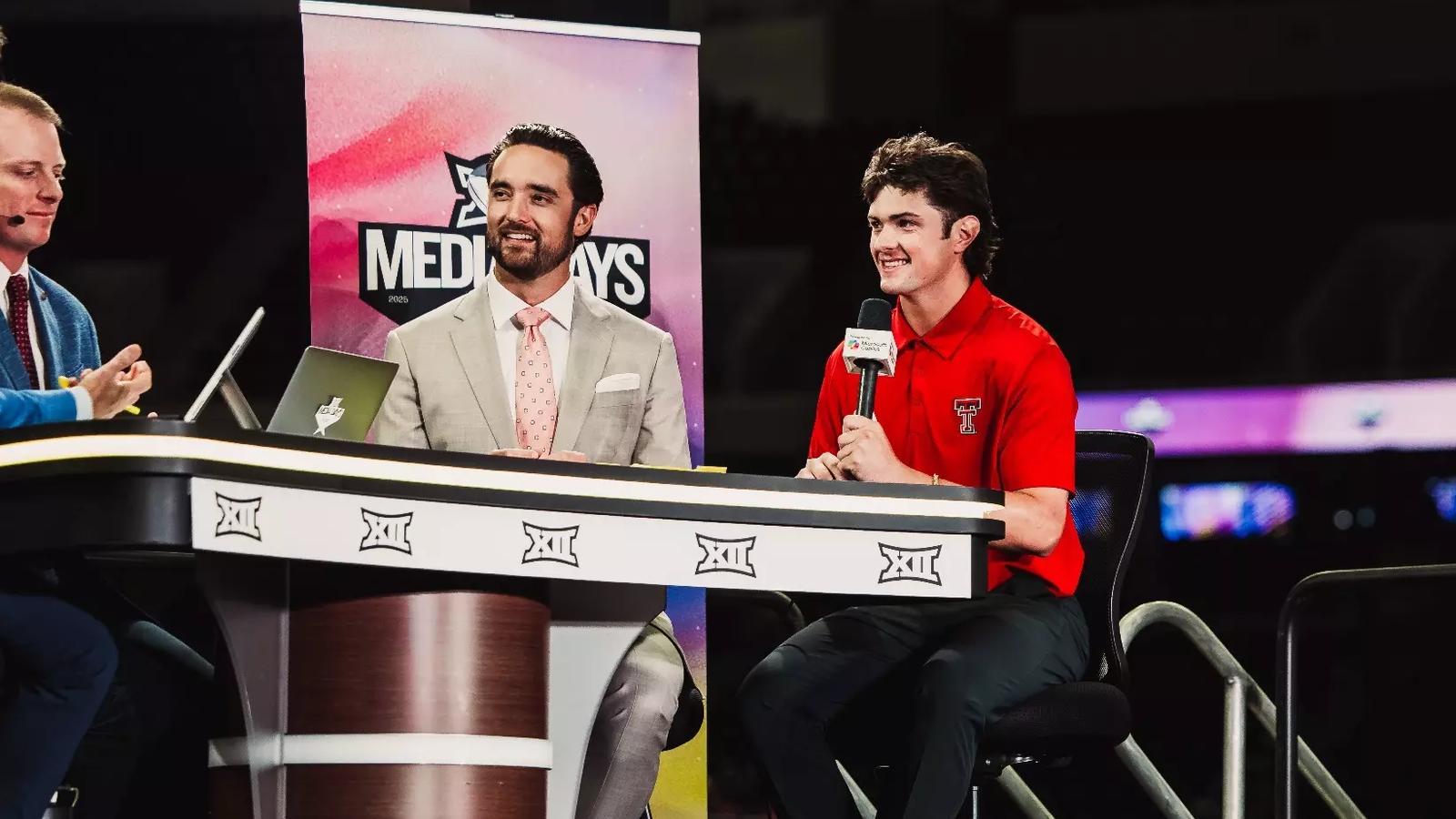
The Maxwell Award watch list kicks off a two-week-plus period, as part of the National College Football Awards Association (NCFAA), that will recognize the best of college football with different watch lists leading into the 2025 season.
Morton, a fifth-year senior, returns after a junior season where he completed 63.3 percent of his passes (295-of-466), throwing for 3,335 passing yards and 27 touchdowns to only eight interceptions. By topping 3,000 passing yards, it marked the 17th time in school history a Red Raider had thrown for at least 3,000 yards in a season and the first time since Nic Shimonek in 2017. Morton started 12 of 13 games in 2024, missing only the Red Raiders’ bowl game as part of the beginning stages of rehabilitation of a lingering shoulder injury; his body of work over 12 games ranked him seventh in the FBS for completions per game (24.58), eighth for passing yards per game (277.9), and 16th for both total passing yards (3,335) and passing touchdowns (27).
He enters his final season as a Red Raider already ranked sixth in the Texas Tech record book for career completions (574), seventh for career touchdown passes (49), ninth for career pass attempts (931) and 10th for career passing yards (6,209). Morton also moved into ninth place for career touchdowns responsible for (56), at Texas Tech as well as yards of total offense (6,284).
Morton will have the opportunity in 2025 to become the fourth Red Raider in program history to throw for 10,000 career passing yards, joining a prestigious list that includes Graham Harrell (15,793), Kliff Kingsbury (12,429) and Patrick Mahomes II (11,252).
The Maxwell Award watch list once again incorporates a broad spectrum of Football Bowl Subdivision (FBS) programs and conferences from coast to coast. The full list consists of 80 players, with Penn State leading the way with three candidates and an additional 16 schools having two players represented. The SEC boasts 17 candidates, followed by the ACC (16), Big 12 (15) and Big Ten (14).
ABOUT THE MAXWELL FOOTBALL CLUB
The Maxwell Football Club was founded in 1935 and is the oldest football organization of its kind in America. The Club recognizes excellence in performance at the high school, collegiate and professional levels of the game. The Maxwell Club is also deeply involved and fully vested in the community through programs to promote academic excellence, community volunteerism, and leadership.
NCFAA WATCH LISTS
The Maxwell Award is a member of the National College Football Awards Association (NCFAA), which encompasses college football’s most prestigious awards. Sixteen NCFAA members are unveiling preseason watch lists over a two-week-plus period as the association spearheads a coordinated effort to promote each award’s preseason candidates.
The following is the 2025 preseason watch list calendar:
- Mon., July 28: Maxwell Award
- Tue., July 29: Outland Trophy/Bronko Nagurski Trophy
- Wed., July 30: Paycom Jim Thorpe Award/Butkus Award
- Thu., July 31: Paul Hornung Award/Allstate Wuerffel Trophy
- Fri., Aug. 1: Lou Groza Award/Ray Guy Award
- Mon., Aug. 4: Walter Camp Award
- Tue., Aug. 5: Doak Walker Award
- Wed., Aug. 6: Biletnikoff Award
- Thu., Aug. 7: Davey O’Brien Award
- Fri., Aug. 8: Mackey Award/Rimington Trophy
- Mon., Aug. 11: Bednarik Award
– TECH –
-

 College Sports3 weeks ago
College Sports3 weeks agoWhy a rising mid-major power with an NCAA Tournament team opted out of revenue-sharing — and advertised it
-

 Sports3 weeks ago
Sports3 weeks agoNew 'Bosch' spin
-

 Fashion2 weeks ago
Fashion2 weeks agoEA Sports College Football 26 review – They got us in the first half, not gonna lie
-

 Health2 weeks ago
Health2 weeks agoCAREGD Trademark Hits the Streets for Mental Health Month
-
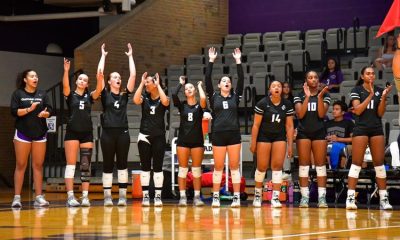
 Sports2 weeks ago
Sports2 weeks agoVolleyball Releases 2025 Schedule – Niagara University Athletics
-

 Youtube3 weeks ago
Youtube3 weeks agoWill Giannis DEPART Milwaukee⁉️ + How signing Turner & waiving Dame impacts the Bucks | NBA Today
-

 Sports2 weeks ago
Sports2 weeks agoAdapti, Inc. (OTC
-
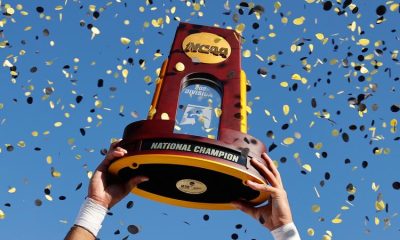
 Sports2 weeks ago
Sports2 weeks agoNew NCAA historical database provides wealth of information on championships
-

 College Sports2 weeks ago
College Sports2 weeks agoBuford DB Tyriq Green Commits to Georgia
-
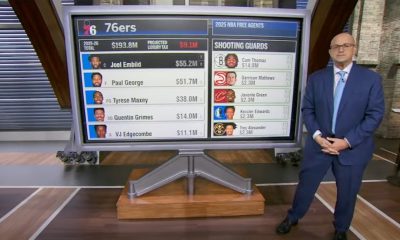
 Youtube3 weeks ago
Youtube3 weeks agoFREE AGENCY BREAKDOWN 🚨 What moves can the 76ers make? 🤔 | NBA Today



























